If Oregon were to nominate a vehicle of choice to go along with its state flower and bird, it would unquestionably be the drift boat.
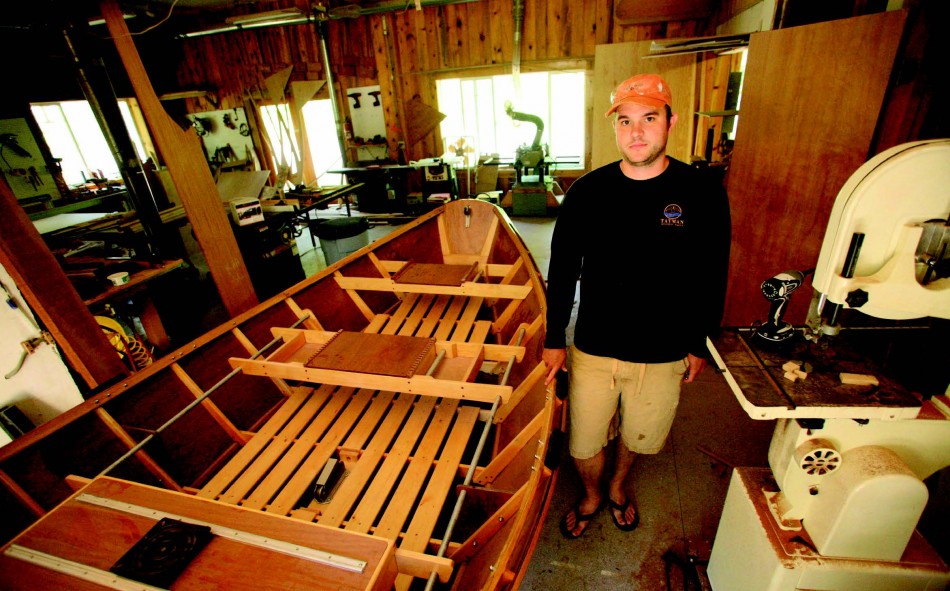
“The drift boat and river dory are Oregon’s unique contribution to river travel,” notes Drift Boats & River Dories author Roger Fletcher. How these boats came to be developed lies in the beds of two of the state’s great rivers—the McKenzie and the Rogue.
As settlements grew along the two rivers, fishing not only sustained life but also became a sport. Fishermen used traditional rowboats to ply the river waters. These were boats of thoughtful design—designs that were periodically modified to meet the needs of river guides. With this ongoing perfecting of design came Oregon’s enormous contribution to river travel.
The McKenzie River Drift Boat
At the end of the nineteenth century, the McKenzie River became a mecca for fishermen from all over the West. As the number of anglers increased, guiding businesses came into existence, and their guides learned how to handle sixteen- to eighteen-foot-long rowboats made out of one-inch thick by twelve-inch wide boards. While these boats were a bit cumbersome, guides soon developed a talent for working them against the current to allow their fly-fishing and bait-casting clients to cover water more effectively.
One of the early McKenzie River guides was John Shirley West, a 19-year-old kid from Nimrod, a splash of a town on the banks of the McKenzie. In 1920, he and his brother, Roy, built a boat with a bottom length of fourteen feet and a bottom width amidships of four feet. One of West’s fellow guides, Milo Thompson, called it, “a bathtub with oarlocks.” That bathtub design became popular well into the 1950s.
A few years after West’s short boat, Veltie Pruitt, who had fallen in love with the McKenzie River while a student in Eugene, built a board-and-batten with an overall length of thirteen feet and a bottom width amidships of three feet. The boat was made from Port Orford cedar and planked with spruce.
A boat like Pruitt’s took months to build, and because there were so few power tools at the time, they were hand-made. On completion of construction, these boats were varnished to bring out a handsome wood grain that could pass for wood sculpture. Pruitt’s creation was light, portable and extremely maneuverable in the water. Old photographs show the boat having a bit more flare at the bow than its predecessors and a tall transom.
“Pruitt basically miniaturized the West boat,” Fletcher elaborates. “In this boat, he and his friend, Prince Helfrich, were the first to run rivers like the Metolius, the Crooked, the Deschutes and the upper and lower Rogue. Their pioneering runs ushered in an era of whitewater river running in the Northwest.”
Still, more change was coming in the form of Norwegian-American master woodworker Tom Kaarhus. Kaarhus, from Eugene, was the first to test and use plywood for his “square-enders,” named for their boxy sterns. Plywood construction made it possible for the average fisherman or river-runner to easily build a drift boat at his home shop. These plywood square-enders were the first drift boats kits.
Kaarhus also created a version to accommodate a motor. This boat became known as the “Rapid Robert,” a name coined by the author of a 1952 article about the Kaarhus boat. The source for the name, “Rapid Robert” remains an unsolved mystery.
An important evolution in drift boat design was still to come. After building square ended boats with a lot of bow flare, McKenzie River guide Woodie Hindman made the first “double-ender” in early 1940. The idea for this design emerged after an adventurous run he and his wife, Ruthie, made in August 1939. He removed the square-ended transom and replaced it with a high prow. The result was essentially a boat with a pointed bow at either end.
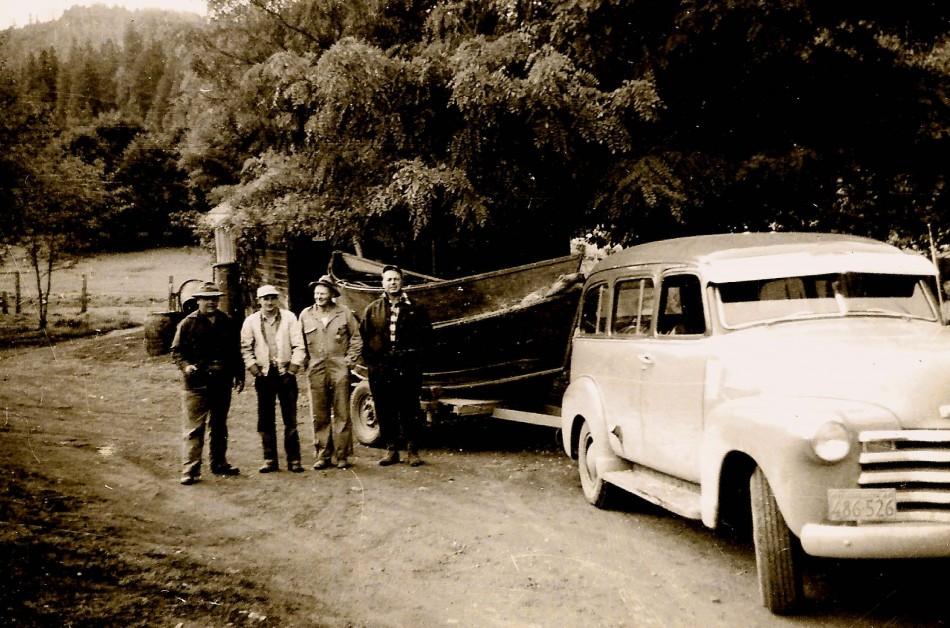
With its continuous fore-to-aft rocker, the Hindman double-ender proved a dream to row. In 1948, Hindman replaced the bow of the double-ender with a small transom. This made it easier for fishermen to cast. It is this Hindman-designed craft that people the world over now recognize as the McKenzie River drift boat.
The modern drift boat was launched, later inspiring prose such as that of Oregon author Grant McOmie. “When you sit between the oars of an Oregon classic called the drift boat, you slide across rapids, slip past boulders, and leave your troubles behind.”
The Rogue River Dory
As boats were being developed on the McKenzie River, down on the Rogue River, guides, starting in the early 1900s, were rowing boats that closely resembled the fabled bateaux that had been used in the Northeast and upper Midwest since the early and mid 1800s. Called “river drivers,” the bateaux were canoe-like in profile.
Author Zane Grey first encountered this boat type in 1922, and subsequently they played a part in his 1930 first non-Western, Rogue River Feud.
Using river drivers as whitewater boats on the Rogue fell to 19-year-old Rogue River Valley resident Glen Wooldridge. Wooldridge is credited with popularizing the Rogue as a sport-fishing destination. In 1915, he and his childhood friend, Cal Allen, built a river driver and ran the Rogue from Grants Pass to Gold Beach.
This boat was twenty-feet long and made of cedar two-by-fours. As Wooldridge became more enamored with the Rogue, he began to modify the boats he built, giving them more flare on the downriver prow and a small transom at the stern. In this regard, the Rogue boats were more dory-like than the McKenzie River boats of the time.
It’s fair to say that Wooldridge set the standard for Rogue River boats. Guides such as, Bob Pritchett, Press Pyle and Jerry Briggs further refined the boats that would become known as the Rogue River dories.
Jerry Briggs started building sixteen-footers in the 1960s and ’70s. First came his “Pink Lady” and later the “Rogue River Special.” Both boats offered great stability, excellent carrying capacity, and were smaller and lighter than the twenty-foot Wooldridge creations.
McKenzie boat-builder Keith Steele built the first two dories for the Colorado River in 1962. Demand for these dories soon outstripped Steele’s ability to supply them so Jerry Briggs helped to craft the overflow of the Colorado boat orders.
Demand for Briggs’ wood dories combined with high labor costs led him to aluminum and a new era of drift boat and dory fabrication. On seeing Briggs’ first aluminum dory, a friend quipped and Fletcher documented in Drift Boats & River Dories, “Damn it, Jerry. If God had wanted aluminum downriver boats, he’d have made aluminum trees.”
The River Dory and the Aluminum Era
Jerry Briggs was central to this new wave of lightweight aluminum boats, building them from “aluminum trees.” Perhaps first among the many new aluminum boat manufacturers of the ’70s was Willie Illingworth, who started the Alumaweld boat-building company in White City, Oregon in 1971. Six years later, he sold his share of the company and, in 1981, formed Willie Boats, which now makes about 300 a year from its Central Point facility.
Joining the aluminum era a few years later was Jammie Dorsey, who founded Two Guy Fabrication in 1978, changing the name to Fish-Rite Custom Aluminum Boats in 1988.
A year prior to Fish-Rite’s opening, Clackacraft, with its “Fear No Rock” slogan, came into being, with fiberglass drift boats. Today, the Clackamas-based company is considered the largest maker of fiberglass drift boats in the world.
The Wood Tradition Lives On
Aluminum and, later, fiberglass boats made a big splash in the drift boat industry. They were more durable and required less maintenance which made them perfect for the weekend warrior. Many drift boat die-hards, however, still preferred traditional wooden boats to any other fabrication.
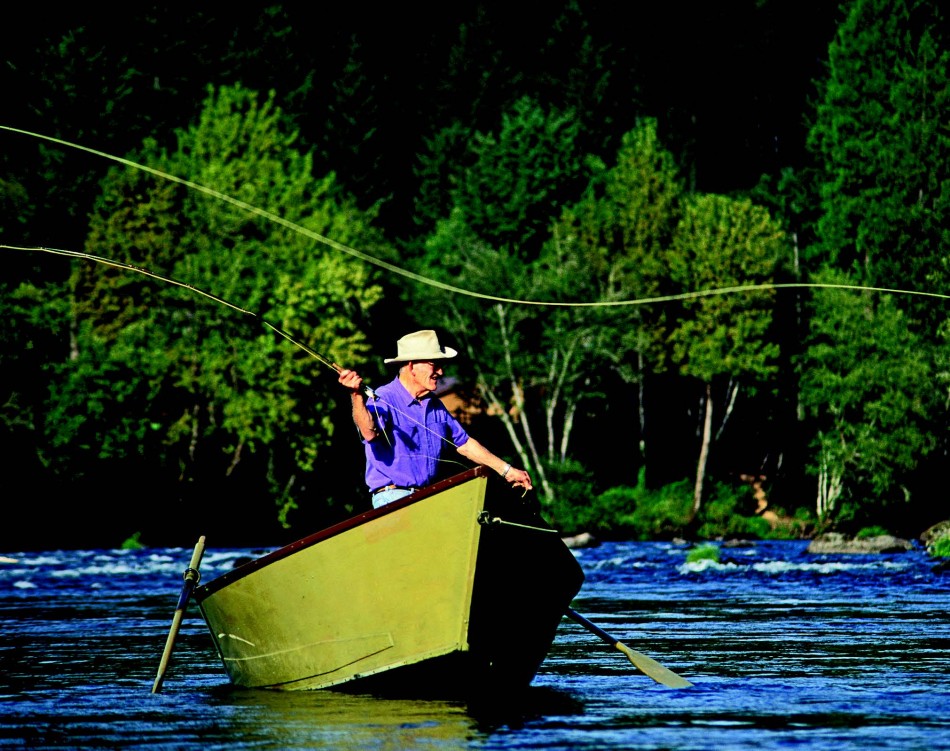
“For wooden boat owners, it’s the historical reference they love,” notes Cy Happy, whose Portland-based Ray’s River Dories makes kits for McKenzie River, Rogue and Woodie Hindman boats. “For others, it’s the quietness of a wood boat in the water, the tactile part of it. A wood boat is one you can hang on to in cold or warm weather. There’s also the sharp chine on our wooden boats that makes them track better.”
Though there are no definitive data on the manufacturing of drift boats in Oregon, the number of boats made in this craft industry each year is likely close to one thousand.
Randy Dersham revived the dormant Tatman Boats drift boat-building operation in Nimrod, along the McKenzie. Today, Tatman makes a half-dozen boats a year that sell for $4,000 to $12,000 for high-end custom models.
For Dersham and his clients, wooden boats are more about posterity and nature. “Wood boats are warm, quiet, and make you feel like a part of the river and a part of history. It’s a spiritual thing that the believers understand but others don’t get. … There is something primal about using natural and local materials to make a vessel that can take people to wonderful natural places.”


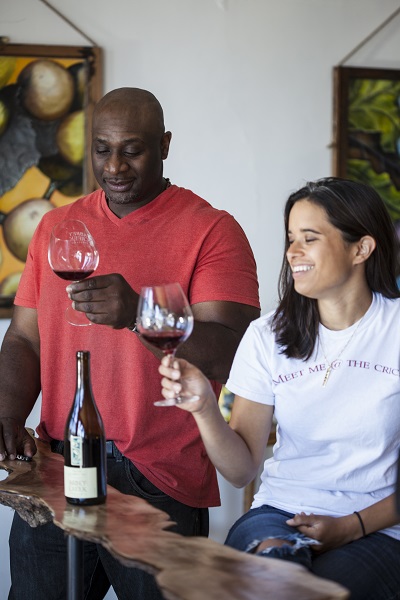
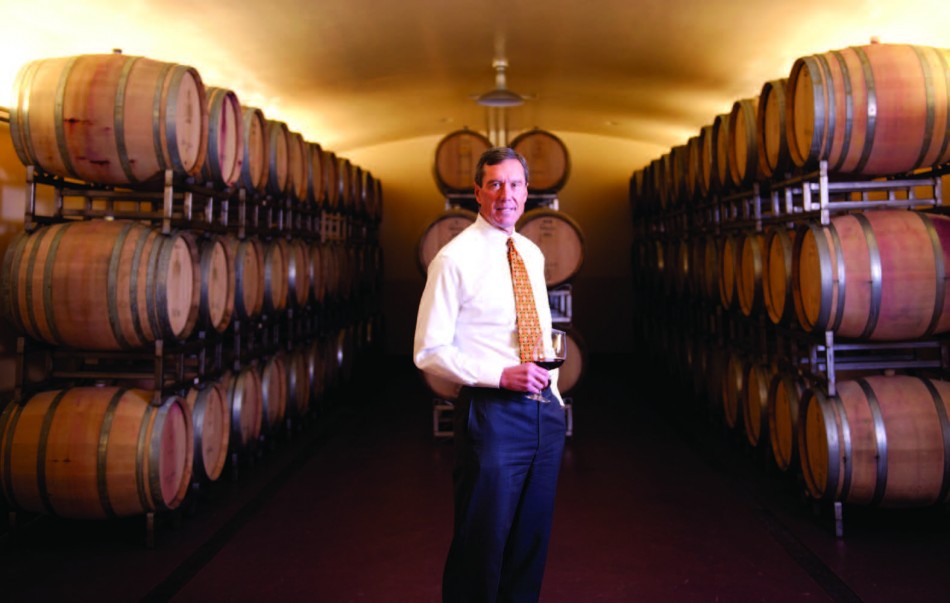
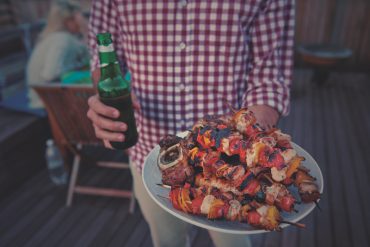



That beautiful photo above of the gentleman in the purple shirt fishing from a drift boat on the McKenzie is my father, William (Bill) Wilson, a Eugene architect and master fly fisherman with who took me on many floats and taught me to fly fish. The photo, it should be noted, first appeared in the Compass American Guide book “Oregon” in 1994, and was taken by Greg Vaughn. My father’s essay on rivers, wild fish, and fishing is on pp. 254-6, where this photo first appeared.
Great article. Nothing like a wood boat.
While Roger’s book is a Great read, the above article incorrectly states “McKenzie boat-builder Keith Steele built the first two dories for the Colorado River in 1962.” Indiana native Steve “Moulty” Fulmer visited with Woodie in 1945 when Fulmer was stationed at Camp Adair. Fulmer got the McKenzie River hull design from Woodie and in 1947, Fulmer had built his first double ender, the MOJA. Fulmer took his decked McKenzie Dory on the San Juan River to Lee’s Ferry on the Colorado River in 1947. Fulmer then took the MOJA on the Yampa through Split Mountain on the Green River in 1950. His he took his next build, a double ender with a transom, through Grand Canyon in 1955. This is all well documented in the book Big Water Little Boats: Moulty Fulmer and the First Grand Canyon Dory on the Last of the Wild Colorado River. Please give the quiet Hoosier his due in being the first to take the McKenzie Dory to the Colorado River.
The Roger Fletcher book on drift boats goes into much more detail if any one is interested. Every time I stay at Lucas lodge in the fall Down in Agness, OR. I pick up the lodges copy and read a little bit more of the story. Im also lucky to be part of the history. I have been guiding dudes in drift boats through the Rogue canyon for a dozen years now and the last couple I have had the pleasure of working For Briggs guide service., one of the originals. Brett puts on a trip second to none and has a welth of Rogue river history and knowledge.
Nice article and a good read. A bit more about Keith Steele would have been appropriate.
Good article however any article about Dory's that does not talk about Ed Harvey from Harvey's marine should not be taken seriously! Harvey Dory's are the best there ever will be they are VERY much sought after even many years after Ed quit making them!
Cal Allen was my great grandfather. Do you have any more information about him?